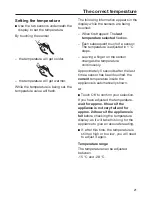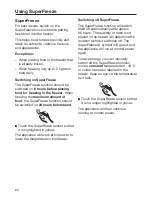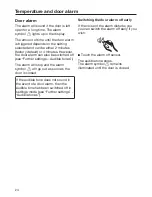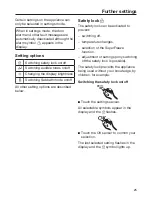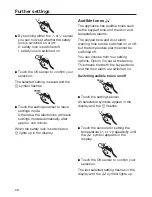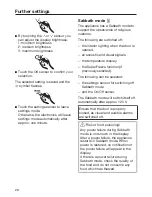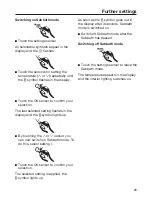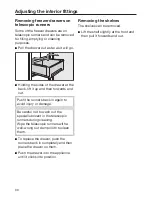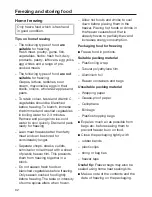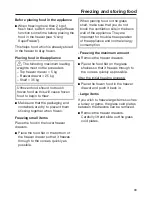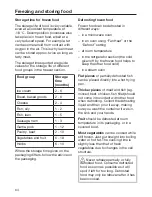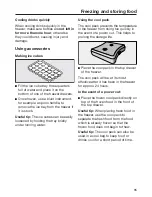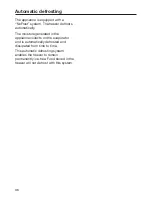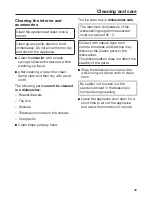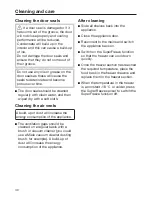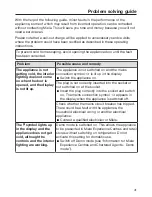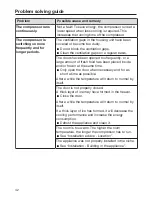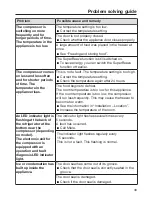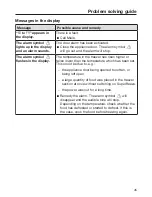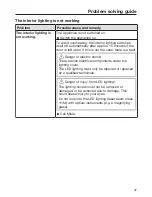
Freezing and storing food
32
Home freezing
Only freeze food which is fresh and
in good condition.
Tips on home freezing
– The following types of food
are
suitable
for freezing:
Fresh meat, poultry, game, fish,
vegetables, herbs, fresh fruit, dairy
products, pastry, leftovers, egg yolks,
egg whites and a range of pre-
cooked meals.
– The following types of food
are not
suitable
for freezing:
Grapes, lettuce, radishes, sour
cream, mayonnaise, eggs in their
shells, onions, whole raw apples and
pears.
– To retain colour, taste and vitamin C,
vegetables should be blanched
before freezing. To blanch, immerse
the trimmed and washed vegetables
in boiling water for 2-3 minutes.
Remove and plunge into ice-cold
water to cool quickly. Drain and pack
ready for freezing.
– Lean meat freezes better than fatty
meat and can be stored for
considerably longer.
– Separate chops, steaks, cutlets,
schnitzel or rolled meat with a sheet
of plastic freezer film. This prevents
them from freezing together in a
block.
– Do not season fresh foods or
blanched vegetables before freezing.
Only season cooked food lightly
before freezing. The taste or intensity
of some spices alters when frozen.
– Allow hot foods and drinks to cool
down before placing them in the
freezer. Placing hot foods or drinks in
the freezer causes food that is
already frozen to partially thaw and
increases energy consumption.
Packaging food for freezing
Freeze food in portions.
Suitable packing material
– Plastic cling wrap
– Tubular polyethylene film
– Aluminium foil
– Freezer containers and bags
Unsuitable packing material
– Wrapping paper
– Grease-proof paper
– Cellophane
– Bin bags
– Plastic shopping bags
Expel as much air as possible from
bags etc. before sealing them to
prevent freezer burn on food.
Close the packaging tightly with
– rubber bands
– plastic clips
– string or bag ties
– freezer tape
Useful tip:
Freezer bags may also be
sealed using home heat sealing kits.
Make a note of the contents and the
date of freezing on the packaging.




